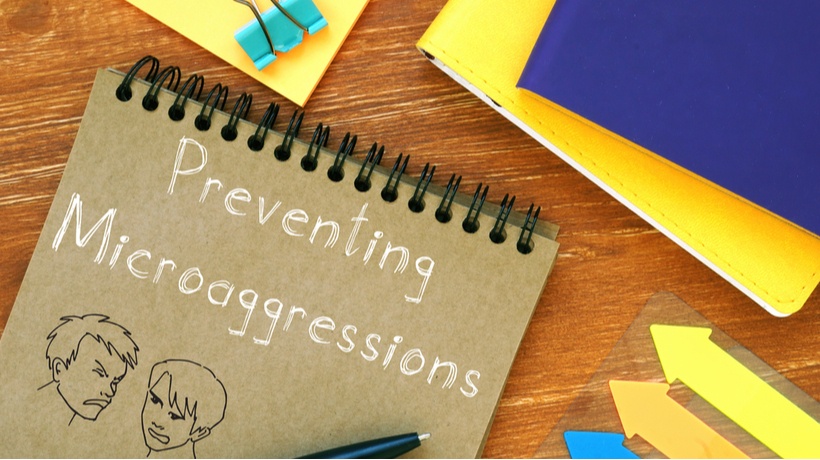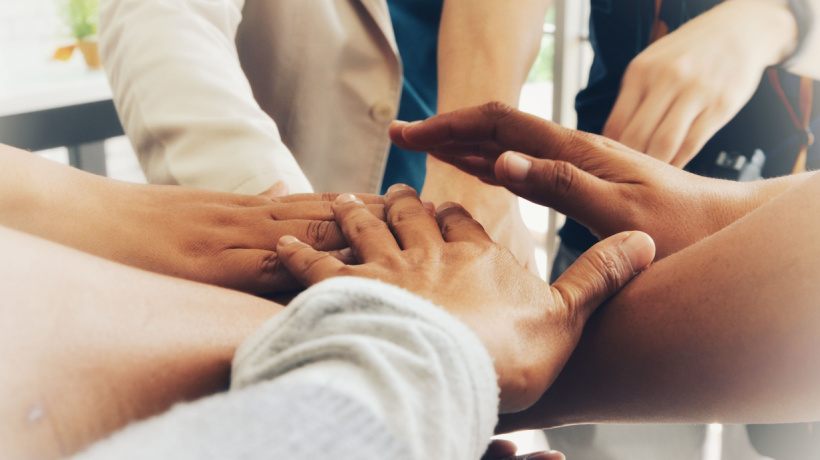Replacing Microagressions With Micro-Inclusions
Have you ever said or heard a comment in the workplace that seemed harmless or even, to you, felt like a compliment?
Consider these comments or actions, what do you think they are examples of?
- A young man jokingly asked his senior colleague, “Do you even know what Instagram is?
- A person uses the term "gay" to describe a movie that they didn't like.
- A woman driving notices a black man crossing the street in front of her car and suddenly checks and locks her car doors.
These are called microaggressions and they contain demeaning hidden messages that often stem from unconscious biases.
What Are Microaggressions?
While the word microaggression has been around since the 1970s, most people either haven’t heard it or aren’t clear about what it means. According to Psychology Today:
Microaggressions are the everyday verbal, nonverbal, and environmental slights, snubs, or insults, whether intentional or unintentional, which communicate hostile, derogatory, or negative messages to target persons based solely upon their marginalized group membership.
One of the most important parts in this definition are the words intentional or unintentional.
Intentionally insulting someone because they are a member of a group is usually better defined as outright discrimination and prejudice. More times than not, the person committing the microaggression doesn’t see the harm in their action, it is unintentional, they might even think they were complimenting the person and be taken aback if the person reacts negatively.
As suggested by the name, microaggressions seem small; but compounded over time, they can have a harmful impact on the person or employee. Microaggressions can create stress, lost productivity, emotional problems, and physical problems for the target.
Psychologists often compare microaggressions to "death by a thousand cuts." This metaphor is commonly found in many studies on the topic. If you’re wondering why this is a big deal, think about that phrase—death by a thousand cuts—what if that microaggression was a paper cut? One small paper cut doesn’t cause too much pain, right? No big deal. Now imagine that same paper cut but multiplied by 10 or 100…it quickly becomes painful.
You might think that these little comments don’t bother you, but maybe that’s because you rarely experience them. Remember, our definition includes the idea that microaggressions happen more to people in marginalized groups. If the marginalized person is always getting paper cuts, then those small, seemingly harmless paper cuts (aka insults) will soon become one too many.
An antidote to microaggressions is micro-inclusions. As the word suggests, micro-inclusions are small acts that make a huge impact to make someone feel included.
Given how common microaggressions are and the harm they cause, how can you help stop them? Below, we will offer advice; whether you're a bystander, the offender, or the target, we all slip up. Even those of us with the best intentions can inadvertently commit microaggressions. We think we are being nice to someone, making small talk, or even being funny.
Consider Your Words
If someone ever accuses you of a microaggression, insult, nasty comment, or inappropriate joke, try and do the following things:
- Listen with an open mind
- Avoid defensiveness
- Apologize
- Learn from the experience
- Reflect on where the microaggression came from and how you can avoid similar mistakes in the future
Next time, instead of making someone feel that they don’t belong, create a micro-inclusion and make them feel welcomed and included.
If you are a bystander and witness microaggressions. There are two things that you can potentially do to help.
- Be an ally. Sometimes an ally’s voice can be heard more powerfully than those directly affected because the micro aggressor may dismiss the target as biased or over-sensitive.
- Speak for yourself and from your point of view, not on behalf of the marginalized person. Don’t say, "You hurt her feelings." Instead say something like, "Here's why I'm offended, upset or hurt by what you said to Jane."
Microaggressions are often unclear. It’s likely the person intended no harm. If someone directs a microaggression toward you, there are a few things you might want to do.
Strategy 1: Pick Your Battles
A professor at John Jay college wrote a paper on microaggressions and he came up with five questions that the target should ask themselves when deciding whether to respond to a microaggression:
- Could my physical safety be in danger?
- Will the person become defensive and will this lead to an argument?
- How will this affect my relationship with the person?
- Will I regret not saying something?
- Does that convey that I accept the behavior or statement?
This process may seem unfair. Still, you need to decide if it’s worth a response.
Strategy 2: Be Prepared With Response Tactics
If you decide the microaggression is worth a response, practicing what to say or how to respond will help:
- Ask for clarification
- Separate intent from impact
- Share your own process
Be sure to criticize the microaggression, not the micro aggressor. Instead of being accusatory, explain how the statement or behavior made you feel, and hopefully, this will help the offender understand the result of their actions or comments and not repeat this mistake in the future.
Be aware, if you do choose to respond, the offender may come back with some form of an objection, such as:
- “You misunderstood me. That’s not what I meant.”
- “I was kidding.”
- “Geez, lighten up.”
There’s no sense in trying to prove they did have bad intentions, just choose your response tactic above and again, talk about why it bothered you.
Strategy 3: Talk With Allies And Choose Self-Care
Find support among allies to discuss common experiences with. Increase awareness by sharing your communities’ stories and take action to create change with strategic dialogue about microaggressions. Protect your happiness and practice self-care by staying healthy, both physically and mentally.
When the behavior is persistent or you’re not sure how to respond, it may be helpful to speak with a manager or HR representative to make them aware of the inappropriate behavior occurring in the workplace.
It’s ultimately up to each individual on how to respond in a way that is most authentic to who they are and how they want to be perceived.
Respect takes some effort. Sometimes it means thinking carefully before we act or speak. Also, try to consider how someone might interpret the comment or action and how someone might feel after you say or do it. If you think there might be a potential problem with something you say or do, then make a different choice. By doing so, we prevent a potential microaggression and replace it with a micro-inclusion.






